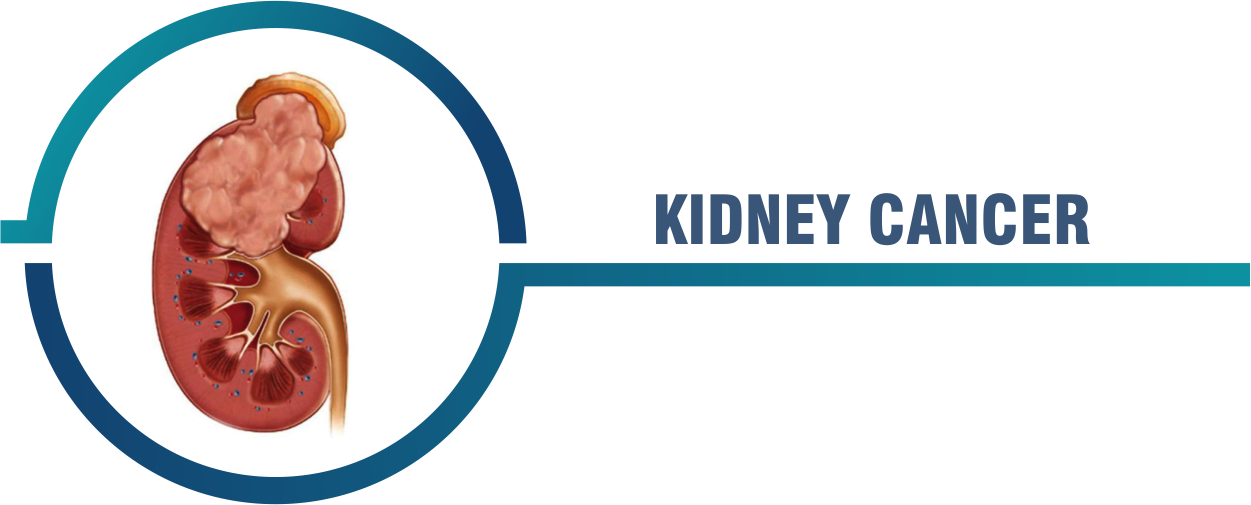
About Kidney Cancer
When healthy cells in one or both kidneys start to grow uncontrollably and form a mass known as a tumor, it is known as Kidney Cancer. Among kidney cancers, renal cell carcinoma is the most prevalent. It starts in the lining of the kidney's "renal tubules," which are incredibly tiny tubes. Your blood is cleaned by renal tubules, which also produce urine. Renal cell carcinoma typically only affects the kidney, but it can spread to other organs as well, most frequently the bones, lungs, and brain.
Kidney Cancer in children is most frequently diagnosed as a wilms tumor. Nearly 90% of pediatric kidney malignancies are Wilms Tumors. Cancer found in the center of the kidney is known as transitional cell carcinoma.
The size of the tumor and the extent of the tumor's cell dissemination determine the various stages of kidney cancer. Stages of Kidney Cancer include the following:
Stage I : The tumor is restricted to the kidney and can grow up to 7 cm in diameter.
Stage II: The tumor is almost always bigger than Stage I, although it is still restricted to the kidney.
Stage III: The tumor has progressed to the surrounding tissue and the lymph nodes in addition to the kidney.
Stage IV: The cancer has spread to distant organs or several lymph nodes.
Symptoms
- Loss of appetite.
- A side or abdominal lump.
- Blood passing through urine.
- Anemia.
- Tiredness and unintended weight loss.
- Leg and foot edema.
- Week-long fever without a known cause.
Risk Factor
- Smoking.
- Obesity.
- High Blood Pressure.
- Family History of Kidney Cancer.
- Gender.
- Advance Kidney Disease.
Investigations
On the basis of the patient's possible symptoms, the oncologist may suggest a few tests to determine whether kidney cancer exists or not. He or she may suggest a combination of the following diagnostic tests to identify cancer cells in the kidney:
- Blood and Urine tests: These tests are carried out to determine the quantity of red blood cells (RBCs) in the patient's blood sample as well as the presence of blood cells, cancer cells, or germs in the urine. These tests do not definitively confirm the diagnosis but may indirectly indicate the presence of cancer cells in the kidney.
- CT Scan: A CT scan is a specialized imaging technology that creates a three-dimensional image of the body's internal organs. It assists in confirming the kidney tumor's position and size. The doctor determines the presence of a kidney tumor by injecting a specific dye into the patient's vein and observing its movement on a CT scan.
- Intravenous Pyelogram: Using X-rays and a contrast dye, this treatment allows doctors to visualize the kidney, urethra, and other parts of the urinary tract. The presence of tumorous cells can be determined using X-ray images of the kidneys and the surrounding lymph nodes.
- Biopsy: A sample of kidney tissue is collected during this procedure and analyzed under a microscope. This aids in identifying the kidney cancer's type, stage, and severity. Before creating a treatment plan, oncologists frequently want a biopsy report.
| Procedure | India | Turkey | Dubai |
| (Price in USD) | (Price in USD) | (Price in USD) | |
| Kidney Cancer Treatment | 4000-6000 | 7000 | 5500-7000 |
| Wilms Tumor (Nephroblastoma) | 4500-6500 | 7000 | 3000-6000 |
Note : This is an approximate cost and may vary depending on various condition of the patient health after physical evaluation.
Treatment Options
Side Effects
- Depression or Anxiety.
- Loss Of Appetite.
- Bloating and Inflammation.
- Constipation.
- Loss of hairs (alopecia).
- Sores in the Mouth and Lips.
- Dizziness and Vomiting.
- Scarring.
- Shortness of Breath (dyspnea).
- Irritation in the Skin.
- Sleeping Problems (insomnia).
- Fatigue.
Benefits
Success Rate
When the cancer is limited to the kidney, about two thirds of patients receive a diagnosis. The 5-year survival rate for this cohort is 93%. The 5-year survival rate is 71% if kidney cancer has migrated to nearby tissues or organs and/or the local lymph nodes.
